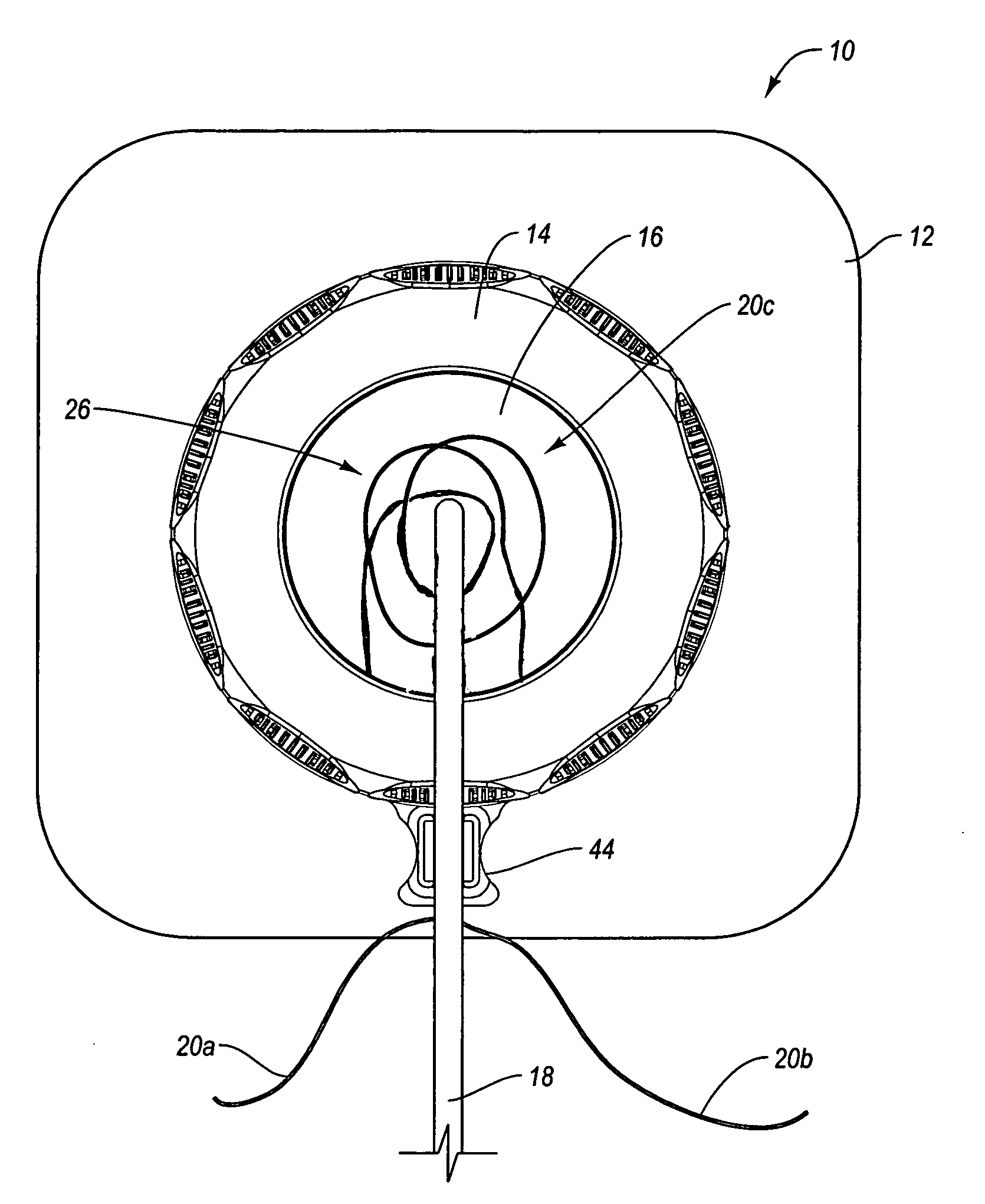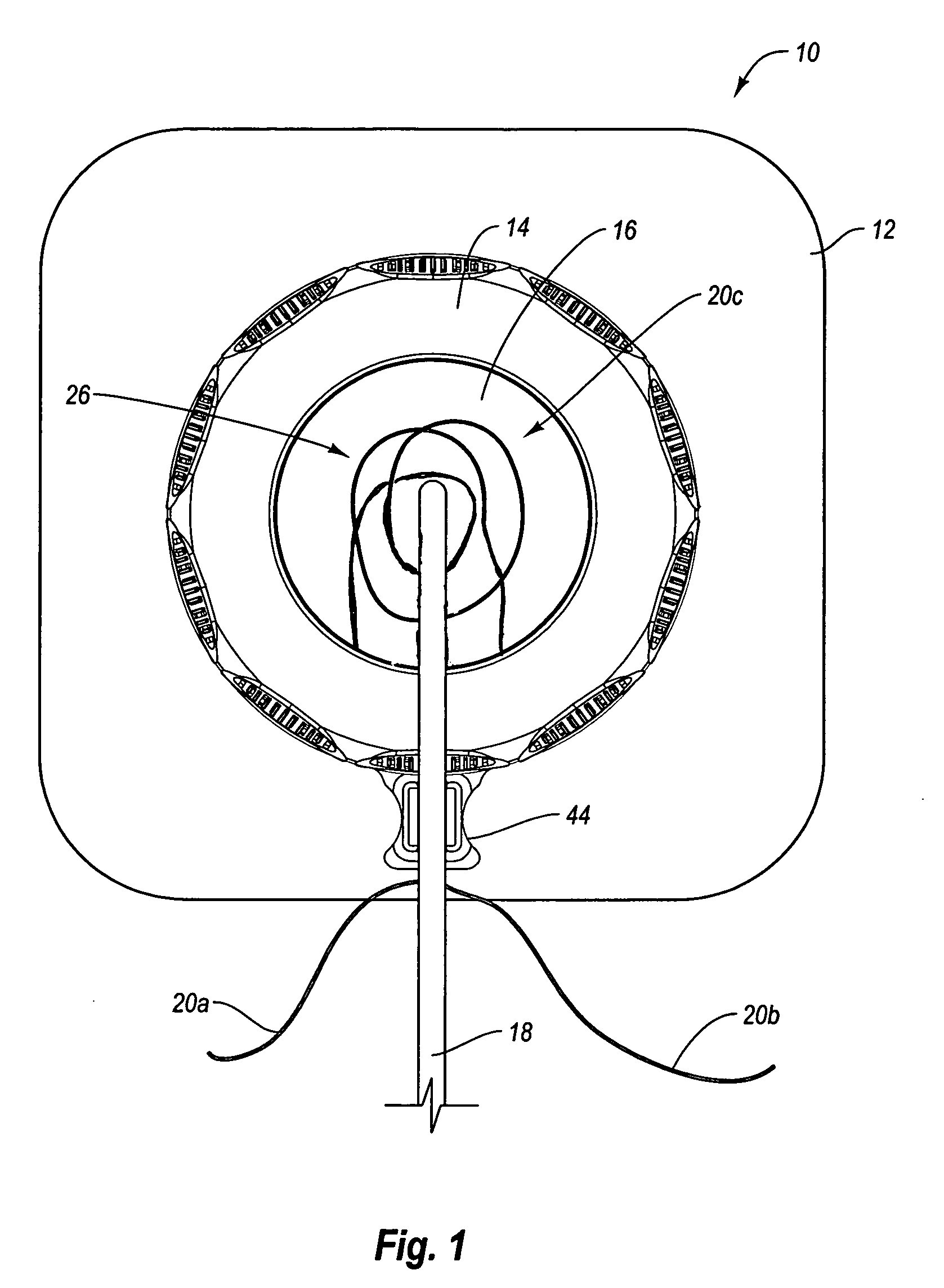Self suturing anchor device
a self-suturing and anchoring technology, applied in the field of catheters, can solve the problems of bending the catheter, affecting the suture site, and affecting the suction effect, and achieve the effect of reducing the risk of catheter pulling at the suture site or bending the catheter
- Summary
- Abstract
- Description
- Claims
- Application Information
AI Technical Summary
Benefits of technology
Problems solved by technology
Method used
Image
Examples
Embodiment Construction
[0025]The present invention is directed to a catheter securement device which automatically secures the catheter without requiring the practitioner to manually suture the catheter to the self-suturing anchor device. The self-suturing anchor device has a securement mechanism which is adapted to be actuated by the user to automatically secure the catheter in a quick and efficient manner.
[0026]The rotatable ring is utilized in connection with a ratchet mechanism. The ratchet mechanism allows movement of the rotatable ring in a first direction while controlling movement of the rotatable ring in the opposite direction. As a result, the rotational position of the rotatable ring is secured against movement in a rearward direction. The ratchet mechanism includes rotatable ratchet members. The rotatable ratchet members pivot allowing for slight movement of the portion of the rotatable ratchet member having the teeth. Additionally, a ratchet member engagement spring is provided which maintain...
PUM
 Login to View More
Login to View More Abstract
Description
Claims
Application Information
 Login to View More
Login to View More - R&D
- Intellectual Property
- Life Sciences
- Materials
- Tech Scout
- Unparalleled Data Quality
- Higher Quality Content
- 60% Fewer Hallucinations
Browse by: Latest US Patents, China's latest patents, Technical Efficacy Thesaurus, Application Domain, Technology Topic, Popular Technical Reports.
© 2025 PatSnap. All rights reserved.Legal|Privacy policy|Modern Slavery Act Transparency Statement|Sitemap|About US| Contact US: help@patsnap.com



